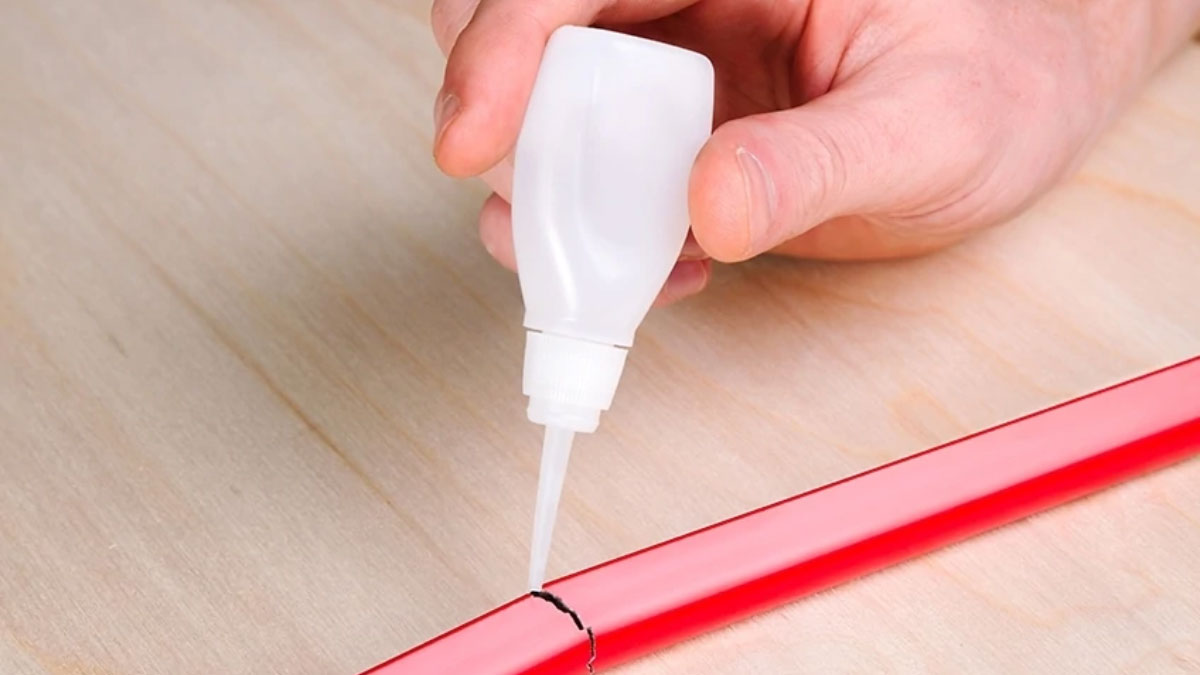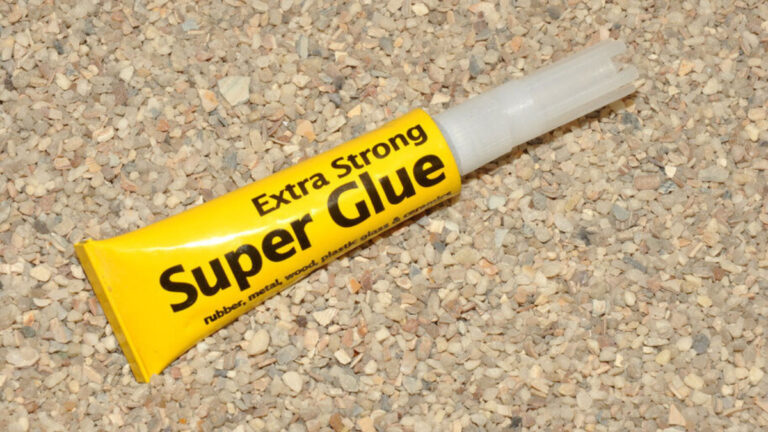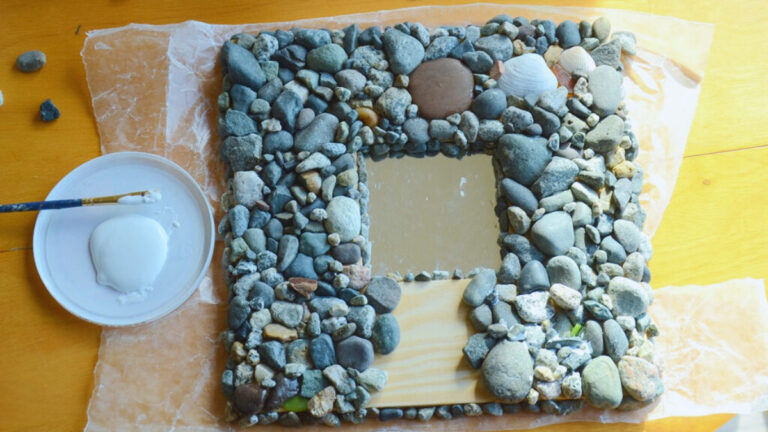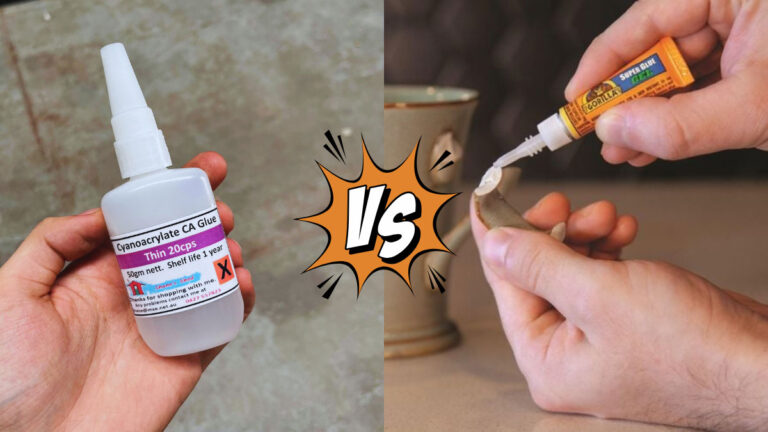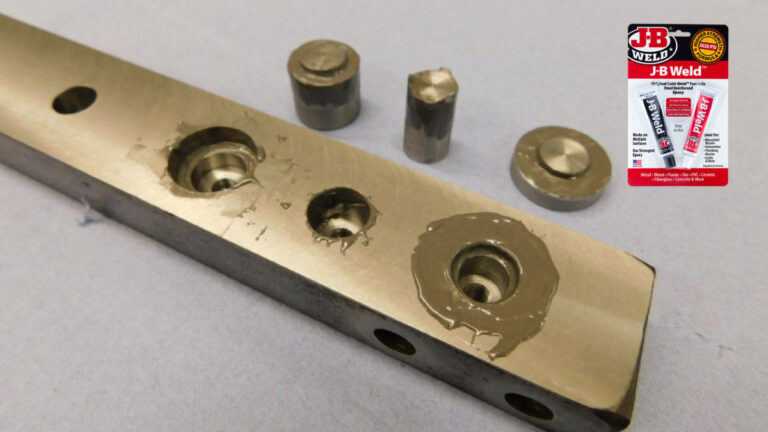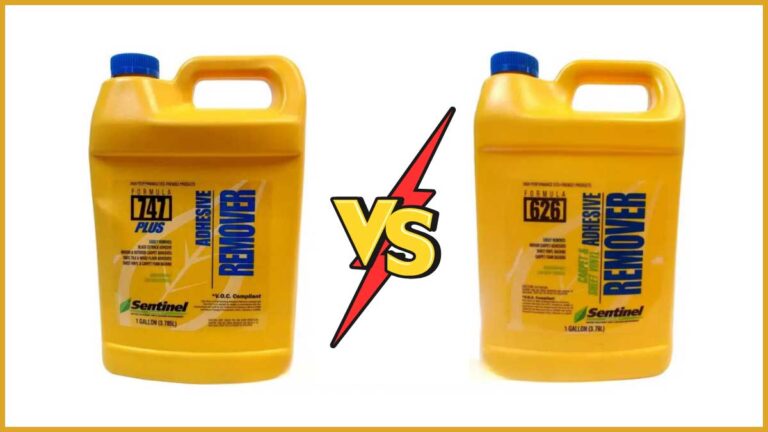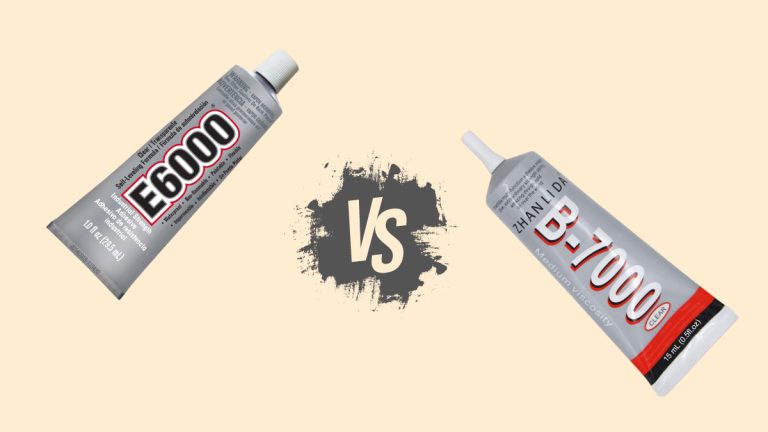Plastic Glue vs Super Glue: Choosing the Best Adhesive
Choosing the right adhesive can make or break your project, especially when working with materials like plastic. You might wonder whether to reach for plastic glue or super glue. Each has its strengths and weaknesses, making it crucial to understand which one suits your needs best.
Plastic glue, designed specifically for plastic materials, offers a strong, flexible bond. On the other hand, super glue, known for its quick-drying properties, can adhere to various surfaces but might not always be ideal for plastic. By knowing the differences, you can ensure your projects are durable and long-lasting.
Key Takeaways
- Adhesion Strength: Plastic glue creates a bond as strong as the original plastic by fusing surfaces together, while super glue offers high tensile strength suitable for a variety of materials but lower shear strength.
- Applications: Plastic glue is ideal for plastic-to-plastic projects such as models and miniatures, providing adjustment time before setting. Super glue is versatile, bonding materials like metal, fabric, and resin, and is excellent for quick repairs.
- Drying Time: Plastic glue typically requires several hours to fully cure, allowing for adjustments, whereas super glue dries within minutes, making it suitable for urgent tasks.
- Ease of Use: Plastic glue requires precision and careful handling due to its chemical properties. Super glue is easier to use, available in liquid or gel forms, and comes with built-in applicators to minimize mess.
- Safety Considerations: Plastic glue contains solvents, necessitating ventilation and protective gear. Super glue is less toxic but can bond skin instantaneously, requiring caution to avoid contact.
Understanding Plastic Glue
Selecting the right adhesive for plastic projects is crucial to ensure durability and longevity. Plastic glue, specifically formulated for bonding plastic materials, offers unique advantages over other adhesives.
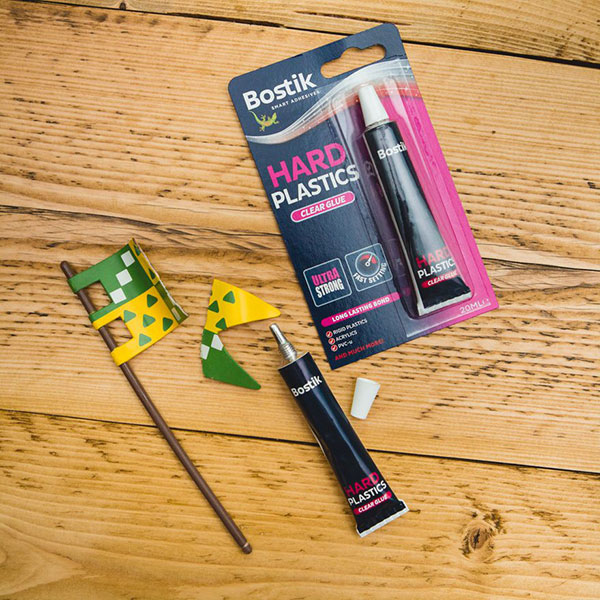
What Is Plastic Glue?
Plastic glue, also known as plastic cement, is designed to bond plastic surfaces by dissolving and fusing the material. This process creates a robust bond that is often as strong as the original plastic.
Types of Plastic Glue
Various types of plastic glue cater to different applications. Knowing the right type ensures a durable bond.
- Poly Cement: Ideal for polystyrene plastics, such as model kits. It features a watery consistency for precise application.
- Example: Tamiya Extra Thin Cement
- Flexible Adhesives: Suitable for flexible plastics in household items like shoes and toys. It provides a water and UV-resistant bond.
- Example: Loctite Vinyl, Fabric & Plastic Flexible Adhesive
Benefits of Using Plastic Glue
Using plastic glue offers several benefits that enhance the quality and longevity of your projects.
- Strong Bond: Fuses plastic materials, creating a durable bond.
- Precision Application: Easy to apply accurately, reducing mess and wastage.
- Versatility: Suitable for various plastic types, including flexible and rigid plastics.
- Resistance: Offers water and UV resistance, ensuring the bond lasts longer even under exposure.
Using the right type of plastic glue ensures a strong, durable, and precise bond, making it an excellent choice for your plastic projects.
Understanding Super Glue
Super Glue offers a fast-drying, strong bond perfect for various materials, including plastics, metals, and fabrics. Whether you’re making quick repairs or handling complex projects, understanding how Super Glue works helps you make informed decisions.
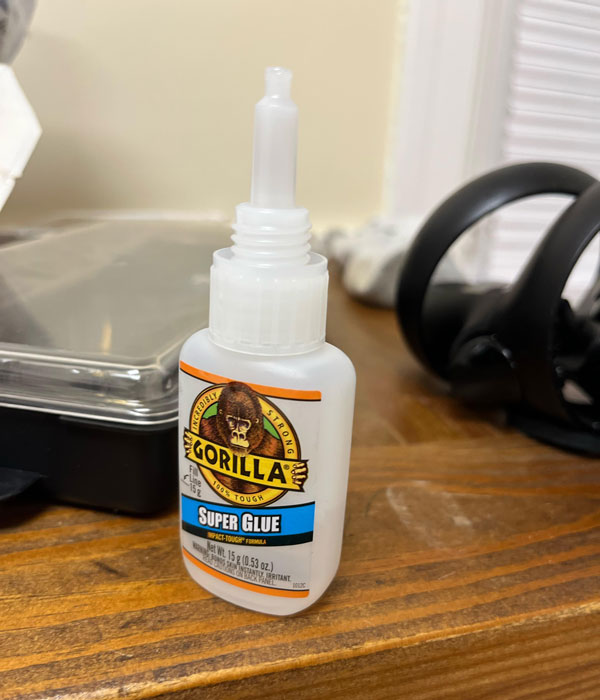
What Is Super Glue?
Super Glue, chemically known as cyanoacrylate, reacts with moisture in the air to form a strong, rigid bond. Its ability to bond quickly to different surfaces makes it a popular choice for numerous applications. Here’s a quick breakdown:
- Chemical Composition: Cyanoacrylate.
- Bonds With: Plastics, metals, fabrics, ceramics, wood.
Types of Super Glue
Various types of Super Glue cater to specific needs, ensuring optimal performance for different tasks.
- Liquid Super Glue: This common form dries quickly and is versatile, suitable for most applications.
- Gel Super Glue: Thicker, more controlled, ideal for vertical surfaces or precise applications where minimal mess is crucial.
- Two-Part Super Glue: Products like Loctite’s Plastics Bonding System use two components to form a robust, impact-resistant bond.
Benefits of Using Super Glue
Super Glue’s benefits make it a go-to solution for many repair and bonding needs. Here are key advantages:
- Fast Drying: Sets in seconds, perfect for quick fixes.
- Strong Bond: Provides a rigid, enduring bond.
- Versatile: Works on various materials, including difficult-to-bond surfaces.
- Precision Application: Gel forms allow accurate application without dripping.
| Type | Drying Time | Ideal For | Key Feature |
|---|---|---|---|
| Liquid Super Glue | Seconds | General repairs | Quick drying and versatile |
| Gel Super Glue | Seconds | Vertical surfaces, precise tasks | Controlled, non-drip |
| Two-Part Super Glue | Minutes | High-strength, impact-resistant | Enhanced durability |
Comparing Plastic Glue and Super Glue
Choosing the right adhesive is crucial for the success and durability of your projects. When working with plastic materials, you’ll often decide between plastic glue and super glue. Understanding their unique properties and applications helps you make the best choice.
Adhesion Strength
- Plastic Glue: Plastic glue, also known as liquid cement, works by melting the plastic surfaces and fusing them together. This process creates a bond as strong as the plastic itself. It provides excellent tension and shear strength, making it ideal for bonding similar plastic materials.
- Super Glue: Super glue, or cyanoacrylate, excels in providing high tensile strength. It is better suited for bonding a wide range of materials, including plastics, metals, and fabrics. But, its shear strength is lower, making it less effective for applications experiencing significant lateral forces.
Application Versatility
- Plastic Glue: Best used for projects requiring plastic-to-plastic bonding, such as models and hobby projects. It can fill gaps and seams by softening the plastic, enabling a strong, weld-like bond.
- Super Glue: Known for its versatility, super glue can bond a variety of materials, like plastic to resin, metal, or fabric. Its ability to provide a quick bond across different surfaces makes it a handy go-to for diverse applications.
Drying Time
- Plastic Glue: Typically takes longer to dry, with full curing often requiring several hours. This extended drying time allows adjustments before the bond sets, which can be beneficial for complex or precise projects.
- Super Glue: Dries rapidly, usually within minutes. This quick drying time makes it ideal for urgent repairs and projects needing immediate handling.
Ease of Use
- Plastic Glue: Requires a bit more preparation and precision due to its chemical properties. It comes in various formulations, such as tubes or bottles with applicator tips, enabling controlled application but requiring careful handling.
- Super Glue: Generally easier to use due to its simple application process. Available in liquid or gel forms, it often comes with a built-in applicator, reducing spills and mess.
Safety and Toxicity
- Plastic Glue: Contains solvents that can be harmful if inhaled. Adequate ventilation is essential when using plastic glue, and wearing protective gloves and masks is advisable.
- Super Glue: Generally considered less toxic, but it can bond skin instantly. While its fumes are less harmful than plastic glue, using in a ventilated area and maintaining caution to avoid skin contact is important.
| Feature | Plastic Glue | Super Glue |
|---|---|---|
| Adhesion Strength | High tension and shear strength | High tension, lower shear strength |
| Application Versatility | Best for plastic-to-plastic | Suited for multiple materials |
| Drying Time | Several hours | Within minutes |
| Ease of Use | Requires precision, preparation | Simple, quick application |
| Safety and Toxicity | Requires ventilation, gloves | Less toxic, avoid skin contact |
Understanding these key characteristics helps you decide whether plastic glue or super glue best meets your project’s needs.
Common Uses for Each Type
Understanding the applications of plastic glue and super glue ensures you select the right adhesive for your project. Each type has distinct advantages suited to specific uses.
Plastic Models and Miniatures
Plastic Glue:
- Ideal for plastic models and miniatures: Plastic glue melts the plastic, creating a durable bond as strong as the material itself.
- Provides adjustment time: You can reposition parts before the glue sets, aiding in precise assembly.
- Ensures clean seams: Perfect for maintaining model integrity during and after painting.
Super Glue:
- Not recommended for plastic models: Due to its brittle nature, super glue may not provide the necessary durability for larger plastic applications.
- Useful for quick fixes: Can be beneficial for minute contact points needing rapid setting. Breakable if corrections are needed.
Metal and Resin Models
Plastic Glue:
- Not suitable: Plastic glue is designed specifically for polystyrene plastics and won’t adhere to metal or resin.
Super Glue:
- Ideal for metal and resin: It bonds quickly and securely to metals and resins, making it a go-to for non-plastic models.
- Fast setting: Enables quick assembly, essential for complex and intricate components.
Household Repairs
Plastic Glue:
- Best for plastic repairs: Use plastic glue when fixing household items made from plastic; it forms a strong, watertight bond.
- Versatile application: Suitable for various types of plastic used in household items.
Super Glue:
- Quick and versatile: Super glue is excellent for rapid fixes on a range of materials, including metal, fabric, and plastic.
- Handy for emergencies: Its fast-drying nature makes it ideal for urgent household repairs.
Table Comparing Uses:
| Feature | Plastic Glue | Super Glue |
|---|---|---|
| Plastic Models | Melts and fuses plastic, durable and strong | Quick fixes, brittle for large contact areas |
| Metal Models | Not suitable | Bonds rapidly, ideal for metal and resin |
| Resin Models | Not suitable | Bonds rapidly, ideal for metal and resin |
| Household Repairs | Best for plastic, versatile application | Quick, versatile, fast drying for emergencies |
Understanding these unique uses helps you select the right adhesive for efficient and effective project outcomes.
Conclusion
Choosing between plastic glue and super glue eventually depends on your project’s specific needs. Plastic glue is your go-to for plastic-to-plastic applications, offering a strong, flexible bond ideal for models and hobby projects. On the other hand, super glue’s fast-drying, versatile nature makes it perfect for quick repairs across various materials, though it’s less effective for high-shear applications.
By understanding the strengths and limitations of each adhesive, you can confidently select the one that ensures durability and efficiency for your projects. Whether you’re working on detailed models or urgent household repairs, the right glue will make all the difference.
Frequently Asked Questions
What is the main difference between plastic glue and super glue?
Plastic glue is specifically designed for plastic materials, melting and fusing the surfaces to create a strong, flexible bond. Super glue, or cyanoacrylate, bonds quickly and can adhere to various materials but has a lower shear strength, making it less effective for applications with significant lateral forces.
When should I use plastic glue over super glue?
Use plastic glue for bonding plastic materials, especially for models or projects where a strong, flexible bond is needed. It is ideal for plastic-to-plastic applications where precision and adjustment time are important. Super glue is better for quick fixes and bonding different types of materials.
Does super glue work on all types of plastic?
No, super glue does not bond well with all types of plastic. It struggles with bonding polypropylene and polyethylene plastics due to their low surface energy, which makes it difficult for the adhesive to adhere to the surface.
Can I use super glue for household repairs?
Yes, super glue is suitable for rapid fixes across various materials in household repairs. However, for plastic items, especially those that may experience significant stress or motion, plastic glue is a better option due to its stronger and more flexible bond.
How do I choose the right type of plastic glue?
Choose plastic glue based on the type of plastic you are working with. Poly cement is ideal for polystyrene plastics, while flexible adhesives are better for household plastic items. Read the manufacturer’s recommendations to ensure compatibility and achieve the best results.
Is plastic glue resistant to water and UV exposure?
Yes, plastic glue is typically resistant to water and UV exposure, making it a durable choice for projects that may be exposed to these elements. This resistance helps maintain the bond’s integrity over time.
Can super glue bond metal and plastic together effectively?
Yes, super glue can bond metal and plastic together effectively, but it may not be as strong as plastic glue for similar materials. Super glue is versatile and good for quick repairs involving different materials, but its bond may not withstand high shear forces over time.
What are the drying times for plastic glue compared to super glue?
Plastic glue usually requires a longer drying time, allowing for adjustments during assembly. Super glue dries very quickly, often within seconds, making it suitable for urgent repairs but less forgiving if adjustments are needed.
Is it safe to use super glue and plastic glue?
Both super glue and plastic glue can be safe if used correctly. Super glue can bond skin instantly, so it should be handled with caution. Always work in a well-ventilated area and follow safety instructions provided by the manufacturer to avoid health risks.

